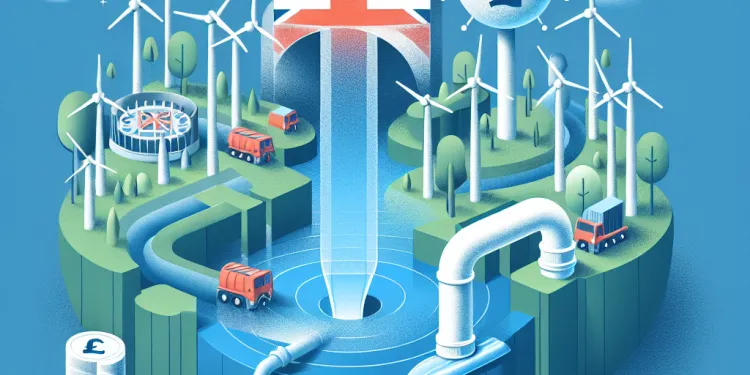
Find Help
More Items From Ergsy search
-
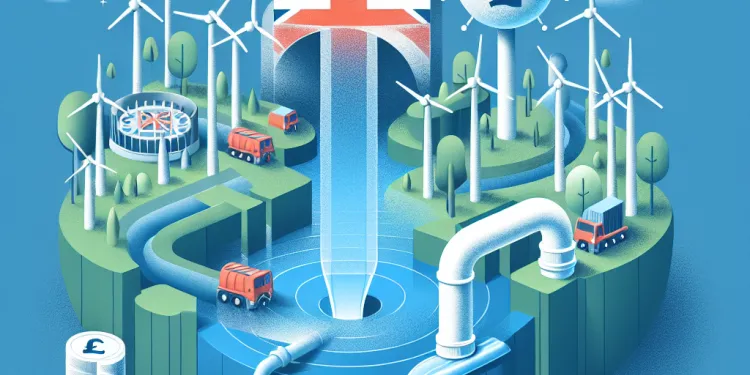
How does climate change affect water infrastructure maintenance?
Relevance: 100%
-
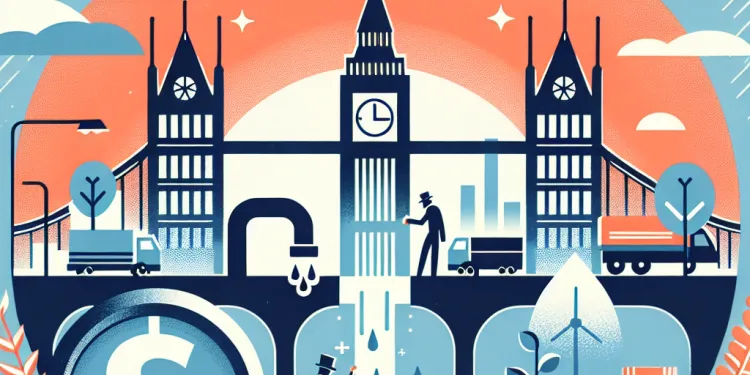
What does water infrastructure maintenance involve?
Relevance: 78%
-
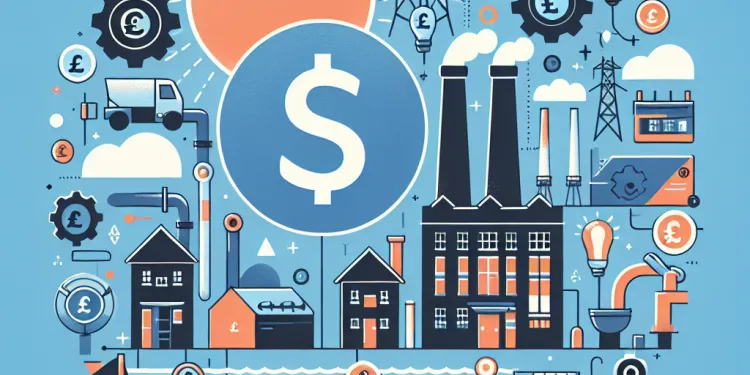
Are water companies responsible for maintaining water infrastructure in the UK?
Relevance: 67%
-
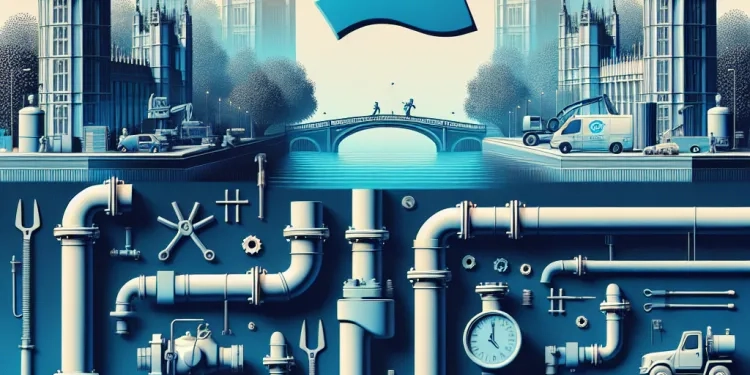
What challenges do water companies face in maintaining infrastructure?
Relevance: 63%
-
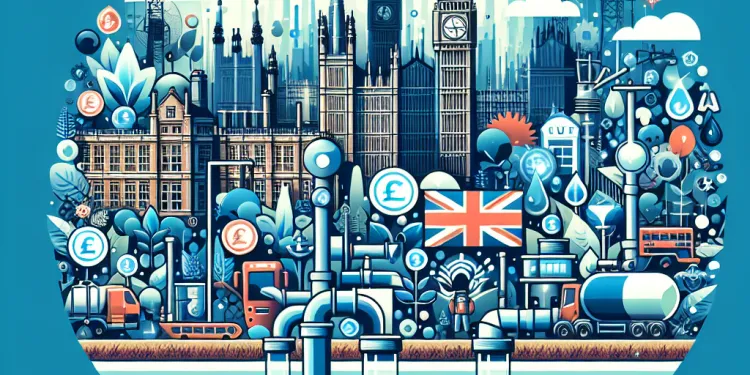
Are water companies responsible to maintain and update infrastructure in the UK?
Relevance: 62%
-
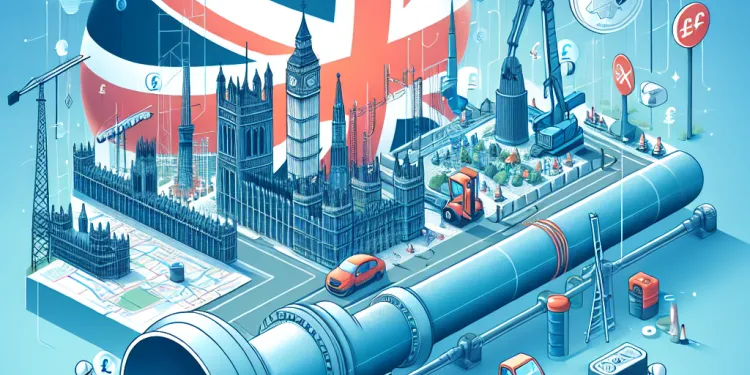
Do water companies have to update the infrastructure?
Relevance: 60%
-
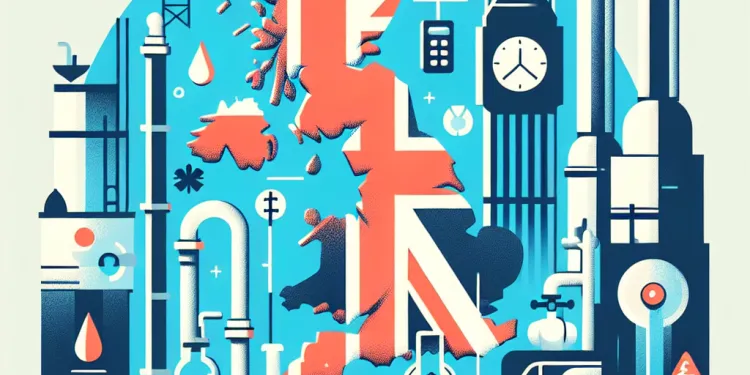
How old is the water infrastructure in the UK?
Relevance: 59%
-

Is climate change affecting sewage pollution levels?
Relevance: 57%
-
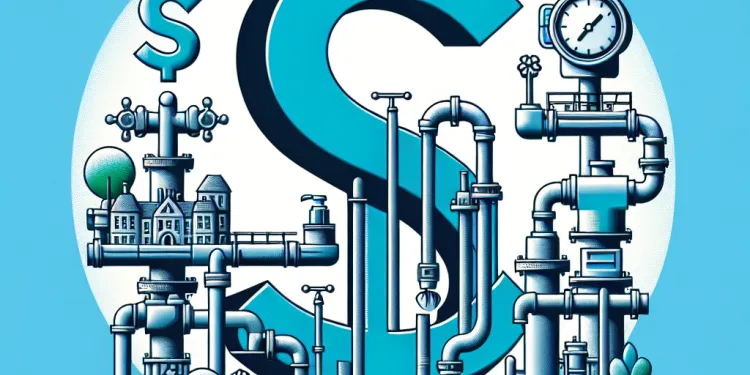
Are there penalties for not maintaining water infrastructure?
Relevance: 57%
-
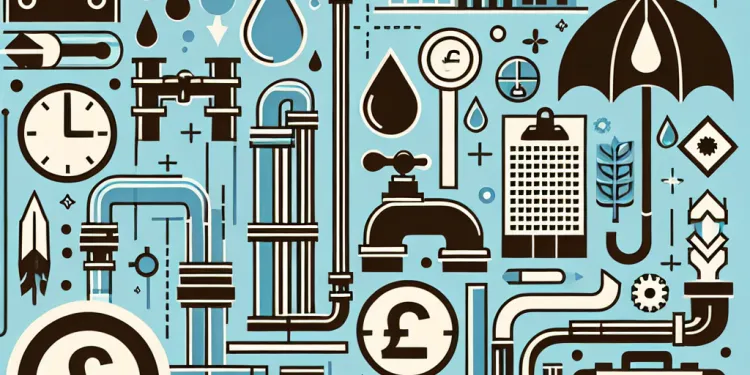
Do water companies have long-term infrastructure plans?
Relevance: 57%
-

What role do climate change and weather play in water infrastructure issues?
Relevance: 54%
-
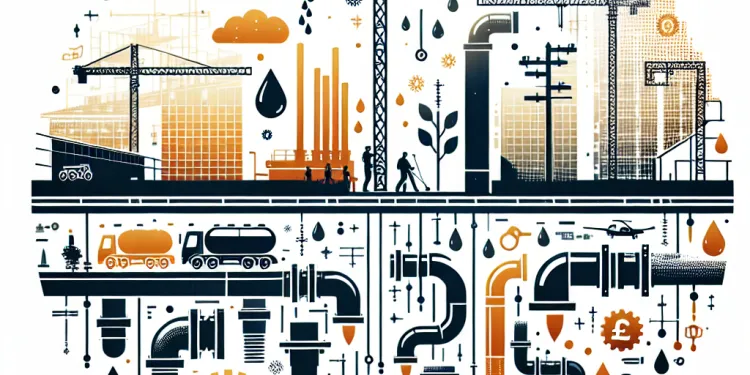
How are infrastructure priorities determined by water companies?
Relevance: 54%
-
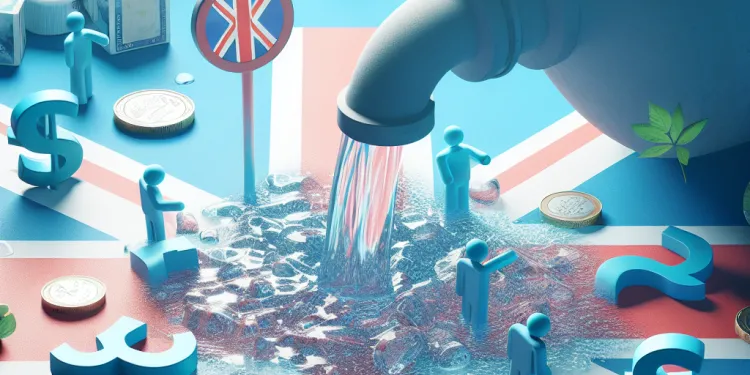
How much water is lost in the UK through poor infrastructure?
Relevance: 53%
-

How do water companies fund infrastructure updates?
Relevance: 52%
-

What role does technology play in infrastructure maintenance?
Relevance: 50%
-
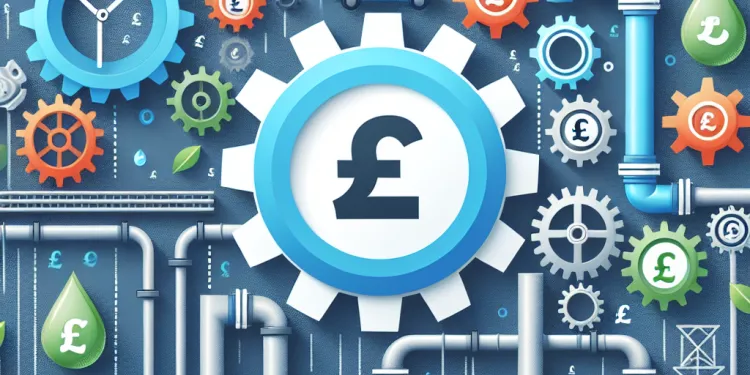
Are there initiatives to improve water efficiency in infrastructure?
Relevance: 49%
-

How are water companies held accountable for infrastructure maintenance?
Relevance: 49%
-

Are climate changes affecting mosquito populations in the UK?
Relevance: 46%
-
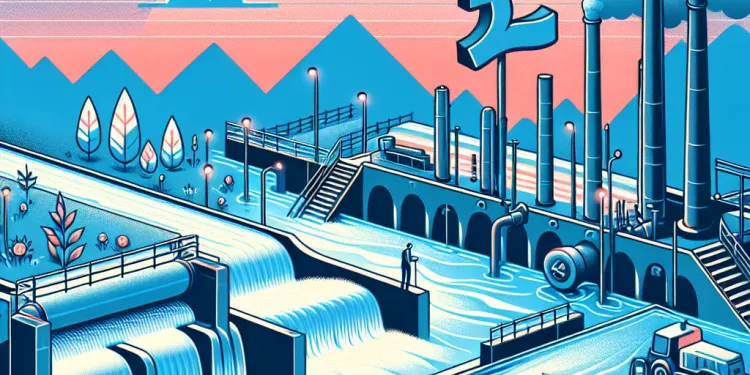
Can customers report issues with water infrastructure?
Relevance: 45%
-

Why is infrastructure maintenance important?
Relevance: 44%
-
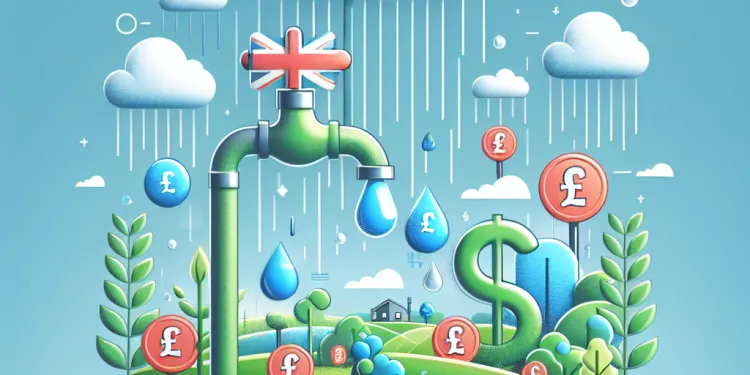
What causes water loss in the UK?
Relevance: 44%
-

How will refunds affect investments towards improving water infrastructure?
Relevance: 43%
-
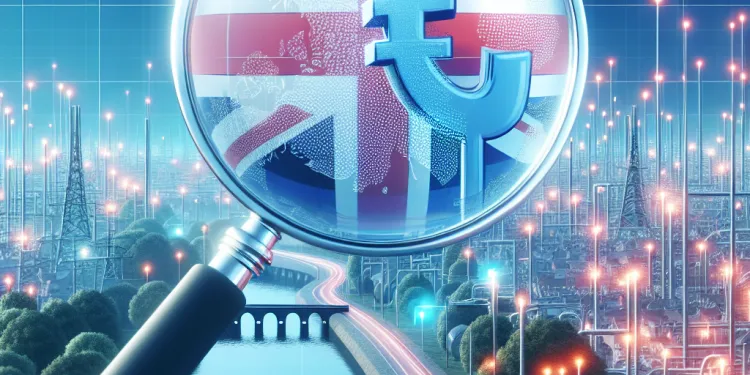
How transparent are water companies regarding infrastructure improvements?
Relevance: 42%
-
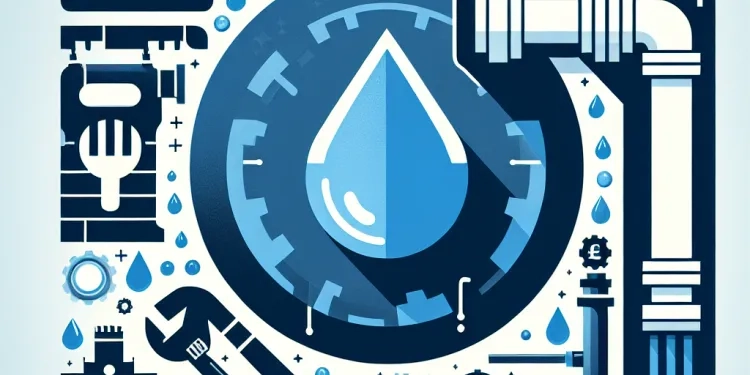
What are common signs of leaks in water infrastructure?
Relevance: 39%
-
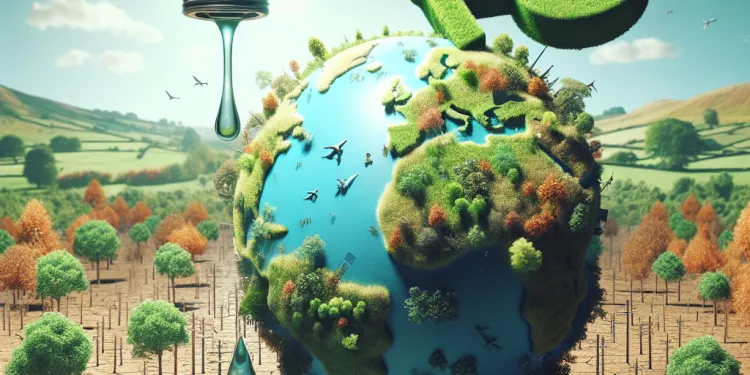
What impact does water loss have on the environment in the UK?
Relevance: 39%
-

Why is it challenging to fix water leaks in the UK?
Relevance: 39%
-
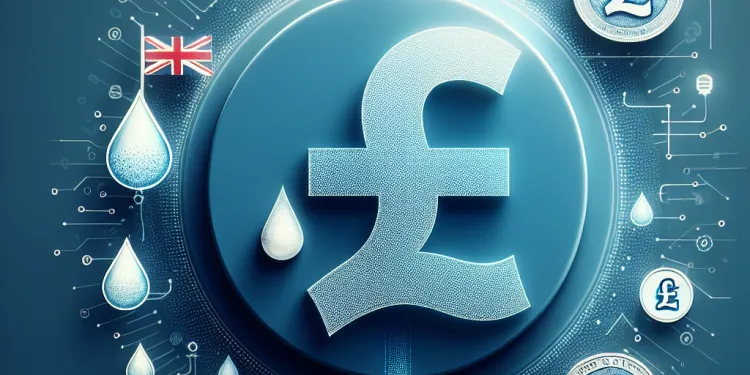
What are the financial implications of water loss for the UK?
Relevance: 38%
-

How does climate change affect pollen levels?
Relevance: 38%
-
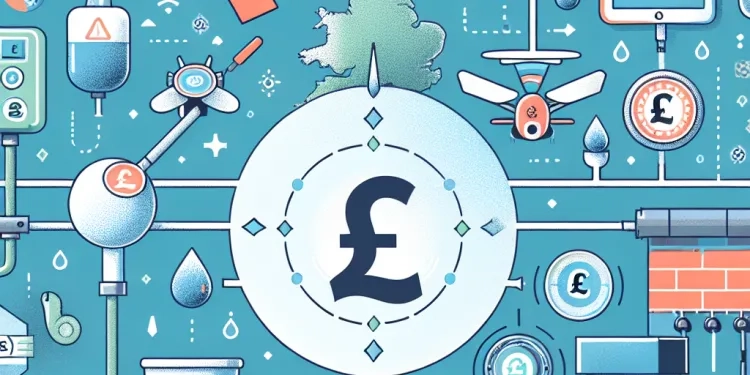
How are new technologies helping to reduce water loss in the UK?
Relevance: 38%
-

How significant is the water loss problem in the UK?
Relevance: 37%
-
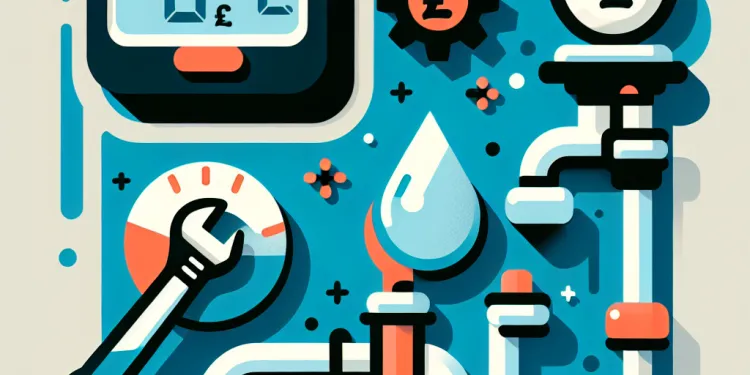
What measures are being taken to address water loss in the UK?
Relevance: 37%
-
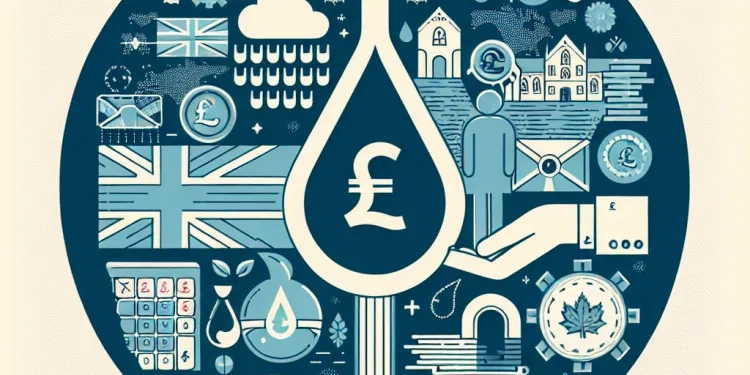
Are there any government initiatives to tackle water loss in the UK?
Relevance: 36%
-
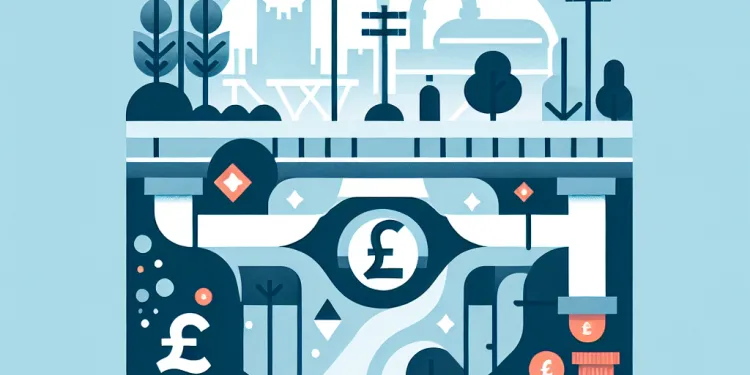
What role do water companies play in sewage pollution?
Relevance: 36%
-
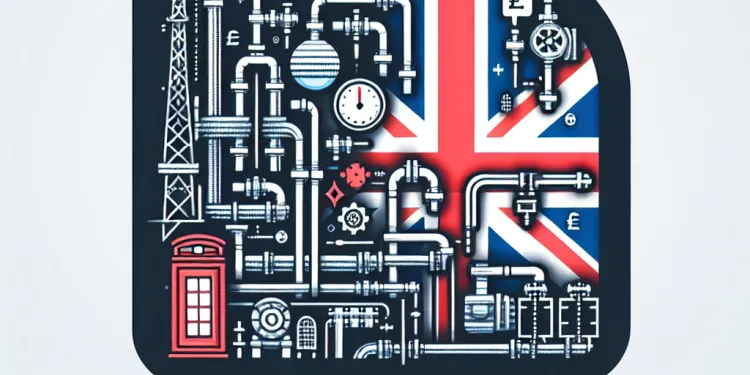
Are customers responsible for any part of the water infrastructure?
Relevance: 35%
-

How do climate changes affect mosquito-borne diseases in the UK?
Relevance: 34%
-

Does Thames Water enforce a hosepipe ban more than other water authorities?
Relevance: 32%
-

Are there new guidelines for property maintenance?
Relevance: 30%
-

Does Thames Water impose hosepipe bans more frequently than other water authorities?
Relevance: 29%
-
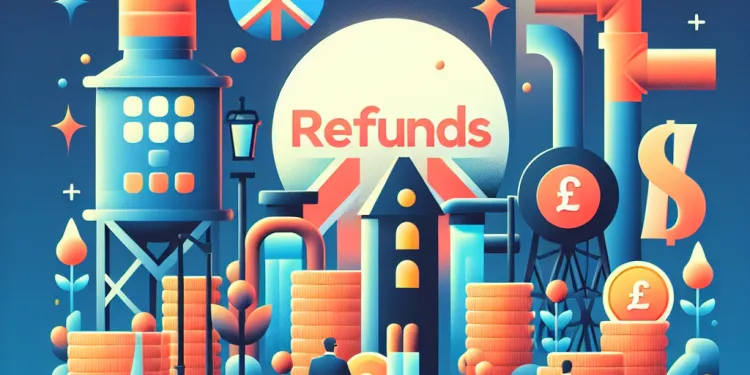
Do these refunds mean water companies have increased their rates fraudulently?
Relevance: 29%
-

What maintenance do defibrillators require?
Relevance: 28%
Introduction
Climate change is increasingly becoming a significant concern for various sectors around the globe. One area that is critically impacted is water infrastructure. For the UK, with its extensive network of pipes, reservoirs, and treatment facilities, the challenges posed by a changing climate are profound. Proper maintenance of this infrastructure is crucial to ensure a reliable water supply and to prevent disruptions that can arise from extreme weather events.
Increased Flooding Risks
One of the most direct effects of climate change on water infrastructure in the UK is the increased risk of flooding. As precipitation patterns change, with more intense rainfall events, the existing drainage and wastewater systems often face overloading. This can lead to severe flooding, damaging pipelines, treatment plants, and storage facilities. The increased frequency and intensity of such events necessitate regular maintenance and upgrades to current systems to manage the larger volumes of water and prevent potential contamination issues.
Temperature Fluctuations
Climate change also brings about more extreme temperature variations, which can affect the integrity and longevity of water infrastructure. Higher temperatures can cause the expansion of pipelines, increasing the risk of leaks and breaks. Conversely, extreme cold spells, although historically less common in the UK, could lead to frozen pipes, causing bursts and service disruptions. Regular inspection and maintenance, as well as the adoption of materials that withstand temperature extremes, are essential to mitigate these impacts.
Water Scarcity Challenges
While parts of the UK may experience more intense rainfall and flooding, other areas might face prolonged periods of drought. Water scarcity can place additional stress on reservoirs and treatment facilities, as they need to manage lower water levels. This situation requires careful monitoring and maintenance to ensure efficiency in water retention and distribution. Furthermore, aging infrastructure may struggle to cope with the increased demand during dry periods, highlighting the need for investment in resilient systems.
Sea Level Rise and Coastal Infrastructure
The impact of rising sea levels is another concern, particularly for coastal regions in the UK. Sea level rise can lead to saltwater intrusion into freshwater systems, affecting the quality of the water supply. Coastal water treatment facilities and pipelines are also at higher risk of flooding and structural damage from storm surges. Mitigation measures include reinforcing infrastructure, relocating vulnerable facilities, and implementing innovative technologies to prevent contamination from rising seas.
Conclusion
In conclusion, climate change poses multiple challenges to the maintenance of water infrastructure in the UK. Addressing these requires a comprehensive approach that includes upgrading existing systems, employing adaptive technologies, and ensuring regular maintenance protocols are in place. Recognizing these challenges and responding proactively is vital to safeguarding the UK's water infrastructure as climate conditions continue to evolve.
Introduction
Climate change is a big problem for the planet. It affects many things, like water systems. In the UK, there are lots of pipes, places to keep water, and machines to clean water. All these things need to work well. If they don’t, bad weather like storms can cause problems. Keeping these systems in good shape is important. This makes sure everyone has water and that there are no big problems when the weather is bad.
Increased Flooding Risks
Because of climate change, heavy rain and flooding are more likely. When it rains a lot, drains and water systems can overflow. This can cause floods, break pipes, and damage water plants. Floods can also make water bad to drink. We need to check and fix these systems often. This helps them handle more water and keep our water clean.
Temperature Fluctuations
Climate change makes hot and cold weather happen more often. When it gets too hot, pipes can get bigger and leak. If it gets too cold, pipes can freeze and break. In the UK, very cold weather is rare but possible. Checking and fixing pipes, and using stronger materials helps. This stops leaks and water problems when the weather changes.
Water Scarcity Challenges
Some places in the UK might get lots of rain. Other places might not get enough and have droughts. Droughts can make it hard to have enough water for everyone. We need to watch water levels and take care of water systems. Old pipes might not handle extra use during these times. It is important to improve our systems so they are strong and can give us water even when it's dry.
Sea Level Rise and Coastal Infrastructure
Sea levels are going up. This is a problem for places near the coast. If seawater gets into fresh water, it can make the water bad. Storms can also damage places where we clean water. We need to make these places stronger and maybe move some of them. New tools and ideas can also help keep our water safe from the sea.
Conclusion
Climate change makes it hard to keep water systems working well in the UK. To fix this, we need to upgrade old systems and use new technology. Checking and fixing our water systems regularly is important. We must act now to protect our water as the climate keeps changing.
Frequently Asked Questions
How does climate change increase the stress on existing water infrastructure?
Climate change leads to more frequent and severe weather events, such as heavy rainfall and floods, which increase stress on water infrastructure, causing wear and tear and raising the need for maintenance and upgrades.
Why does climate change necessitate upgrades to aging water infrastructure?
Aging water infrastructure may not be equipped to handle the increased demand and stress caused by climate change impacts, such as increased rainfall and flooding, necessitating upgrades to improve resilience.
How can climate change exacerbate water quality issues in infrastructure systems?
Climate change can lead to changes in land use, increased temperature, and altered precipitation patterns, potentially increasing sediment and pollutant loads in water systems, which can degrade water quality.
What role do droughts play in affecting water infrastructure due to climate change?
Climate change may increase the frequency and severity of droughts, leading to reduced water availability, which can strain infrastructure systems that are designed for larger water volumes.
How do rising temperatures due to climate change impact water infrastructure maintenance?
Rising temperatures can lead to thermal expansion, reducing the lifespan of materials used in water infrastructure and increasing maintenance needs.
Why is increased extreme weather a concern for water infrastructure maintenance under climate change?
Extreme weather events can damage infrastructure directly by causing physical impacts or indirectly by increasing the pressure on existing systems, necessitating more frequent maintenance.
How does sea level rise affect coastal water infrastructure?
Sea level rise can lead to increased saltwater intrusion into freshwater systems, which can corrode pipes and other infrastructure, necessitating specialized maintenance and replacement.
In what ways does climate change lead to changing water demand patterns?
Climate change can alter precipitation patterns and temperatures, affecting water availability and demand seasonally, potentially overwhelming existing infrastructure systems not designed for these changes.
What impact do increased flood events have on water infrastructure due to climate change?
Increased flood events can cause physical damage to infrastructure, inundate treatment plants, and overwhelm water storage facilities, necessitating repairs and upgrades.
Why might water storage infrastructure require adaptation in response to climate change?
Water storage infrastructure may need adaptation to accommodate greater variability in water supply and demand, including increased storage capacity for managing altered precipitation patterns.
How does climate change-induced sedimentation impact water infrastructure?
Increased sedimentation from more frequent rainfall and runoff can clog waterways and sewers, necessitating more frequent clearing and maintenance of water infrastructure.
What are the financial implications of climate change on water infrastructure maintenance?
The increased need for maintenance, upgrades, and adaptation in response to climate change can result in significant financial burdens for communities, requiring additional funding and investment.
How can increased variability in precipitation due to climate change affect reservoir management?
Reservoir management may become more complex with increased precipitation variability, requiring more dynamic operation and maintenance to balance flood control, water supply, and ecological considerations.
How does climate change influence the frequency of maintenance checks for water infrastructure?
Due to increased stress and risks to water infrastructure from climate impacts, more frequent inspections may be needed to ensure they remain in good working condition.
What role do higher temperatures play in deteriorating water infrastructure materials?
Higher temperatures can cause materials such as concrete and asphalt to expand and contract more than normal, leading to cracking and faster deterioration.
How do changing precipitation patterns affect stormwater management systems?
Climate change can lead to more intense and less predictable precipitation events, potentially overwhelming stormwater management systems and necessitating upgrades to handle increased runoff.
Why might groundwater infrastructure need to change in response to climate change?
Groundwater recharge rates may be affected by altered precipitation patterns, requiring updates in groundwater extraction and recharge infrastructure to ensure sustainable water supply.
How does increased runoff from climate change-induced storms affect urban water systems?
Increased runoff from storms can overwhelm urban drainage systems, causing flooding and necessitating expanded or enhanced infrastructure to manage the increased volume.
What challenges do utilities face in maintaining water infrastructure amid climate change?
Utilities face challenges such as increased maintenance costs, the need for infrastructure upgrades, and planning for future climate conditions, which requires additional resources and adaptation strategies.
How is wastewater infrastructure impacted by climate change-related flooding?
Flooding can inundate wastewater treatment facilities, leading to contamination, disrupted services, and increased maintenance needs to ensure systems remain operational.
How does climate change make water systems work harder?
Climate change is making the world hotter. This can cause problems for the places that store and clean water.
- Hot weather can dry up lakes and rivers where we get water from.
- Storms can cause floods, which might damage pipes and water treatment plants.
- Both droughts (dry seasons) and floods can make it hard to keep clean water flowing.
Here are some tips to learn more:
- Use pictures to help understand where water comes from and how it is taken care of.
- Watch videos that explain climate change and water in simple words.
- Talk with someone who knows this topic well.
Climate change makes weather worse. There is more rain and floods. This puts a lot of pressure on things like pipes and drains. This means we need to fix them more often and make them better.
Why do we need to fix old water pipes because of climate change?
Climate change makes weather more extreme, like heavy rain and droughts. Old water pipes can break or get clogged. We need to fix or replace them so they can handle new weather patterns. This helps keep our water clean and safe.
Tools like pictures, videos, and simple diagrams can help explain more. They make it easier to understand how water systems work.
Old water pipes and systems might not work well when there is more rain and flooding. This can happen because of climate change. We need to make these systems better and stronger.
How does climate change make water problems worse in buildings and systems?
Climate change can cause weather to be hotter or wetter.
This can make water pipes and systems not work well.
When it rains a lot, water can get dirty and hard to clean.
Sometimes, pipes break because it is too hot or there is too much rain.
Here are some tips to help understand:
- Watch videos about climate change.
- Use pictures to see how water systems work.
- Ask an adult to explain difficult words.
Climate change can change the way we use land. It can also make the weather hotter and change rain patterns. These changes can put more dirt and pollution into water, which can make the water dirty.
How do droughts change water systems because of climate change?
Climate change can cause more droughts. Droughts are when there is not enough water. This can make it hard to get enough water for everyone. Our water systems might not work well if there is not much water.
How does Earth getting hotter change how we fix water pipes and systems?
When it gets hotter, things can stretch and get bigger. This is called expansion. This can make pipes and other things that carry water wear out faster. They might need fixing or replacing more often.
Tools like videos with sign language or audiobooks can help understand these ideas better.
Why is bad weather a problem for water systems?
The weather is changing. There are more storms and very hot days now. This can be a problem for places that give us water, like pipes and water plants.
Bad weather can break pipes and make it harder to fix them. When it rains a lot, water can get dirty and unsafe to drink.
It is important to take care of these water places so we always have clean water.
Tools like pictures or videos can help explain how water systems work. Talking to someone about this can also help you understand better.
Bad weather can break things like roads and buildings. This happens when the weather hits them hard. Sometimes, bad weather can make things like roads need fixing more often.
How does rising sea level affect water systems by the coast?
When the sea level goes up, it can cause problems for water systems near the coast. These systems might be things like pipes, pumps, and drains. If they are too close to the water, they can get flooded or stop working. This can make it hard for people to get clean water or safely get rid of dirty water.
Some tools or ideas that can help are:
- Building walls to keep water out.
- Moving water systems to safer places.
- Checking and fixing systems often to make sure they work well.
When the sea gets higher, salty water can mix with freshwater. This salty water can harm pipes and other important things. It might mean we have to fix or replace them more often.
How does climate change affect the way we use water?
Climate change can change how much water we need. This can happen because:
- Hot weather can make people use more water.
- Less rain can mean there is not enough water to go around.
- More storms can lead to water being used differently.
Here are some ways to make reading easier:
- Read with a helper if you need one.
- Use tools like audiobooks or text-to-speech for help.
- Break the information into small, easy parts.
Climate change can make weather different. It can change how much it rains and how hot or cold it gets. This affects how much water we have and how much we need. Sometimes, the systems we use for water might not be ready for these changes.
How does more flooding from climate change affect water systems?
When there is more flooding, it can cause problems for water systems. Water systems help us get clean water and take away dirty water. Too much water can damage pipes and break pumps.
Tools like pictures or videos can help you understand more about this topic. Using simple maps and diagrams can also be helpful.
More floods can break things like roads and bridges. They can also flood places that clean water and store it. This means they need fixing and making stronger.
Why do we need to change how we store water because of climate change?
Climate change means the weather is different. Sometimes it rains a lot, and sometimes it doesn't rain at all. This can be a problem for water storage.
Here is why we might need to change how we store water:
- Too much rain: If it rains a lot, our water storage places might overflow. We need to make sure they can hold more water.
- Not enough rain: If it doesn't rain for a long time, we might run out of water. We need to save water better.
- Hotter weather: Hot weather can make water dry up faster. We need strong storage that keeps water from drying out.
Helpful tools to learn more about this topic:
- Use picture books about weather and water to understand the changes better.
- Watch videos made for kids about climate and water to see what's happening.
We might need to change how we store water. This is because the amount of water we have and use can change a lot. We might need bigger tanks or dams to hold more water, especially if rain patterns change.
How does climate change make dirt move and affect water systems?
Climate change can cause a lot of rain and make the weather change.
This might make dirt, rocks, and sand move into rivers and lakes.
When this happens, the dirt can block pipes and water systems we use for drinking or cleaning.
We can use tools like pictures or simple charts to understand this better.
When it rains a lot, dirt and sand can wash into rivers and pipes. This can block them. We need to clean these more often to keep the water flowing.
How does climate change affect the cost of taking care of water systems?
Climate change makes weather more extreme. Things like roads, buildings, and bridges may need more repairs and upgrades because of this. Fixing them can cost a lot of money, which might be hard for communities to pay for. They may need extra money and help to keep everything working well.
How can changes in rain and snow affect water storage?
Climate change can make rain and snow less predictable. This means it might rain a lot at once, or not rain at all for a long time.
When it rains a lot, water storage areas like reservoirs can fill up quickly. People managing these places need to make sure they don't overflow.
When it doesn't rain, there might not be enough water in the reservoirs. This can be a problem if people and farms need water.
People managing reservoirs need to plan for these changes. They can use tools like weather forecasts to help them keep the right amount of water.
Managing water in a big lake can get tricky if rain falls in uneven amounts. This means we need to be smarter about how we use and care for the water to stop floods, make sure there is enough water to use, and look after plants and animals that need the water.
How does climate change affect how often we check water systems?
Climate change can make the weather different. This might cause water pipes and systems to break more often. We might need to check them more to fix any problems.
Climate change can make water systems more stressed and risky. This means we might need to check them more often to make sure they keep working well.
How does hot weather damage water pipes and materials?
When it gets really hot, things like concrete and asphalt can get bigger and smaller more than usual. This makes them crack and break down faster.
Using a magnifying glass to make text bigger or reading out loud can help you understand better.
How does rain changing affect stormwater drains?
Rainfall is the water that falls from the sky. It can be big rain or little rain. Stormwater drains are the pipes and ditches that help move rainwater away. If the rain changes, like if we get more rain or less rain, it can change how these drains work.
Tools like pictures or models can help you understand more about stormwater drains. You can also talk to someone about what happens when the rain changes.
Climate change means the weather is changing. It can make storms stronger and less predictable. This can cause too much rain for places to handle. So, we need to make stormwater systems better to deal with more water.
Why Do We Need to Change Water Systems Because of Climate Change?
The weather is changing, and this affects our water. Sometimes there is too much rain. Other times, not enough. This can make it hard for our water systems to work well.
We need to change the way we collect and clean water. This will help make sure we have enough clean water for everyone.
Tools like pictures and videos can help us understand more. Talking with friends or teachers can also be helpful.
Changes in rain can change how quickly the ground refills with water. We might need to change how we take and refill water from under the ground. This is important to make sure we have enough water.
How do more storms from climate change change city water systems?
Heavy rain can cause too much water to flow in cities. This can make drains overflow and roads can flood. To fix this, cities might need bigger or better drains.
What problems do water companies have because of climate change?
Water companies have big jobs. They take care of pipes, tanks, and other tools to bring water to us. But now, they have new problems because the weather is changing. It's called climate change.
Here are some problems they face:
- More Storms: Storms might happen more often. Storms can break pipes.
- Less Rain: Sometimes, there's not enough rain. This means there might not be enough water for everyone.
- Old Equipment: Some pipes and tools are old. They need to be fixed or replaced, which can be hard to do.
- Hotter Weather: Hot days mean people use more water. This can be too much work for old pipes.
These are big problems. Water companies work hard to fix them and make sure we have water every day.
Utility companies have some big problems. They need to spend more money to fix things. They also need to make their systems better and stronger. They have to think about how weather is changing in the future and plan for it. This means they need more tools and new ways to do things.
Reading tools like text-to-speech can help make information easier to understand. Also, using pictures can help explain ideas more clearly.
How does flooding from climate change affect wastewater systems?
Flooding can cause problems for places where we treat dirty water. These places are called wastewater systems.
When there is a lot of rain, it can flood and make the systems overflow. This means the dirty water can go where it shouldn’t.
To help understand better, you can look at pictures or videos about wastewater systems and flooding.
You can also use simple tools like checklists or diagrams to see how systems work and how flooding affects them.
Floods can cause big problems for places that clean water. This can make the water dirty and cause services to stop. Workers have to fix and clean things a lot to keep everything working.
Useful Links
- Ergsy carfully checks the information in the videos we provide here.
- Videos shown by Youtube after a video has completed, have NOT been reviewed by ERGSY.
- To view, click the arrow in centre of video.
- Most of the videos you find here will have subtitles and/or closed captions available.
- You may need to turn these on, and choose your preferred language.
- Go to the video you'd like to watch.
- If closed captions (CC) are available, settings will be visible on the bottom right of the video player.
- To turn on Captions, click settings .
- To turn off Captions, click settings again.
More Items From Ergsy search
-

How does climate change affect water infrastructure maintenance?
Relevance: 100%
-

What does water infrastructure maintenance involve?
Relevance: 78%
-

Are water companies responsible for maintaining water infrastructure in the UK?
Relevance: 67%
-

What challenges do water companies face in maintaining infrastructure?
Relevance: 63%
-

Are water companies responsible to maintain and update infrastructure in the UK?
Relevance: 62%
-

Do water companies have to update the infrastructure?
Relevance: 60%
-

How old is the water infrastructure in the UK?
Relevance: 59%
-

Is climate change affecting sewage pollution levels?
Relevance: 57%
-

Are there penalties for not maintaining water infrastructure?
Relevance: 57%
-

Do water companies have long-term infrastructure plans?
Relevance: 57%
-

What role do climate change and weather play in water infrastructure issues?
Relevance: 54%
-

How are infrastructure priorities determined by water companies?
Relevance: 54%
-

How much water is lost in the UK through poor infrastructure?
Relevance: 53%
-

How do water companies fund infrastructure updates?
Relevance: 52%
-

What role does technology play in infrastructure maintenance?
Relevance: 50%
-

Are there initiatives to improve water efficiency in infrastructure?
Relevance: 49%
-

How are water companies held accountable for infrastructure maintenance?
Relevance: 49%
-

Are climate changes affecting mosquito populations in the UK?
Relevance: 46%
-

Can customers report issues with water infrastructure?
Relevance: 45%
-

Why is infrastructure maintenance important?
Relevance: 44%
-

What causes water loss in the UK?
Relevance: 44%
-

How will refunds affect investments towards improving water infrastructure?
Relevance: 43%
-

How transparent are water companies regarding infrastructure improvements?
Relevance: 42%
-

What are common signs of leaks in water infrastructure?
Relevance: 39%
-

What impact does water loss have on the environment in the UK?
Relevance: 39%
-

Why is it challenging to fix water leaks in the UK?
Relevance: 39%
-

What are the financial implications of water loss for the UK?
Relevance: 38%
-

How does climate change affect pollen levels?
Relevance: 38%
-

How are new technologies helping to reduce water loss in the UK?
Relevance: 38%
-

How significant is the water loss problem in the UK?
Relevance: 37%
-

What measures are being taken to address water loss in the UK?
Relevance: 37%
-

Are there any government initiatives to tackle water loss in the UK?
Relevance: 36%
-

What role do water companies play in sewage pollution?
Relevance: 36%
-

Are customers responsible for any part of the water infrastructure?
Relevance: 35%
-

How do climate changes affect mosquito-borne diseases in the UK?
Relevance: 34%
-

Does Thames Water enforce a hosepipe ban more than other water authorities?
Relevance: 32%
-

Are there new guidelines for property maintenance?
Relevance: 30%
-

Does Thames Water impose hosepipe bans more frequently than other water authorities?
Relevance: 29%
-

Do these refunds mean water companies have increased their rates fraudulently?
Relevance: 29%
-

What maintenance do defibrillators require?
Relevance: 28%


